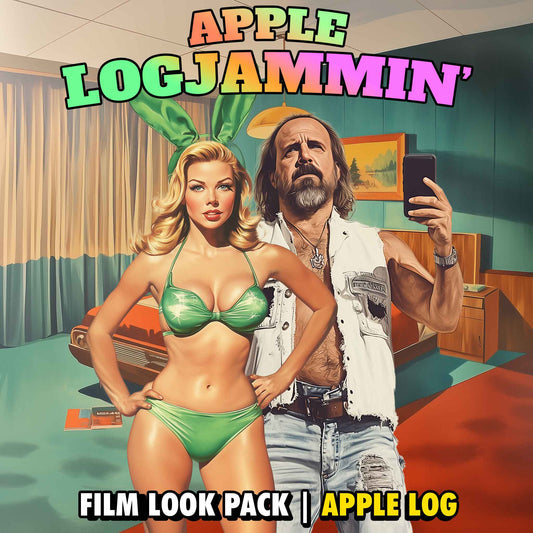How to Record Video to an SSD on iPhone or Android (2025 EPIC Guide)
Share
Want to record flawless ProRes or RAW video directly to an SSD from your iPhone or Android — with zero dropped frames or record errors? This is your ultimate guide.
In this in-depth tutorial, we’ll break down:
- Why you should record video to an external SSD
- The best SSDs for iPhone and Android video capture
- Required SSD speeds, power draw, and formatting
- Which apps support SSD recording on mobile (Blackmagic Camera and MotionCam Pro)
- How to mount your SSD securely to your smartphone
- And how to configure your phone to record directly to the SSD
Let’s get started.
Epic Tutorials is reader-supported. When you buy links through our site, we may earn an affiliate commission. Thanks for your support.
Why Record Video to an SSD?
Recording to an SSD brings four major benefits:
1. Lower Cost per Gigabyte
Upgrading your smartphone’s internal storage is expensive.
For example:
- Apple charges $400 USD to go from 256GB to 1TB on an iPhone
- That’s $0.52 per GB
- A 1TB Lexar external SSD? Under $100 USD or less than $0.10 per GB!
2. Longer Record Times
Shooting ProRes (iPhone) or RAW DNG (Android via MotionCam Pro) eats up storage fast. An SSD lets you keep rolling without hitting storage limits.
3. Unlock Higher Frame Rates
On the iPhone, unless you have a compatible SSD external drive attached, you will be locked out of recording at the highest frame rates supported by your device:
- iPhone 15 Pro: 4K 60fps ProRes requires an SSD
- iPhone 16 Pro: 4K 120fps ProRes also requires an SSD
4. Faster Workflow
Skip slow imports. Just unplug your SSD and start editing on a Mac, PC, or iPad instantly.
How Fast Does Your SSD Need to Be?

It depends on your recording format:
| Format | Resolution | FPS | Required Write Speed |
|---|---|---|---|
| ProRes (iPhone) | 4K | 60fps | 220MB/s |
| ProRes (iPhone) | 4K | 120fps | 440MB/s |
| HEVC (iPhone/Android) | 4K | 30–60fps | ~50–150MB/s |
| RAW DNG (MotionCam Pro) | 4K | 24fps+ | 300MB/s+ |
⚠️ Note: Always prioritise write speed, not just read speed.
✅ Recommended SSDs for Video Recording
Lexar SL500 SSD
- Rated: Up to 1,800MB/s write
- Real-world: Fast & reliable
- Works great with cages/mounts
Lexar Go SSD + Media Hub
- Direct-connect option
- Low power draw
- Compact & ideal for run-and-gun setups
💡 Tip: Always test your SSD using tools like Blackmagic Disk Speed Test (Mac/Windows) to verify real-world performance.
Why Power Draw Matters

Most phones output a max of 4.5W over USB-C. SSDs with higher power draw can cause:
- Dropped frames
- Recording errors
- Sudden disconnects
❌ SSDs to Avoid:
- SanDisk Extreme PRO Portable SSD V2 (peaks at 7.3W)
✅ SSDs with Low Power Draw:
Choosing the Right USB-C Cable

Not all USB-C cables are created equal. You need:
- USB 3.1 Gen 2 or USB 3.2 Gen 2x1
- Speed: 10Gbps (1,250MB/s)
- Length: Keep under 2m (shorter = better)
Avoid:
- Charging-only cables
- Unlabeled or generic cables
- Passive USB 4 cables over 0.8m
🔗 For compatible USB-C Cables that support 120fps ProRes and RAW video on smartphone see here.
How to Format Your SSD for iPhone and Android

For capturing video to an SSD on your smartphone, you need to format your SSD as exFAT with no encryption. This format supports:
- Files larger than 4GB
- Full compatibility with macOS, Windows, iOS, and Android
How to Format you SSD as ExFAT for iPhone and Android Video Capture:
On iPhone (iOS 17/18+):
- Long-press the SSD in Files app > Erase > Choose exFAT.
On Mac:
- Use Disk Utility > Select your SSD > Erase > Format: exFAT
On Windows:
- File Explorer > Right-click SSD > Format > File System: exFAT
⚠️ Android does not natively support formatting as exFAT — use a computer to do it.
Best SSD Mounting Solutions for Smartphones
✅ Top SSD Mounts & Grips (2025)
1. Lexar Go Professional SSD for iPhone and Android
- Direct USB-C connection
- Optional hub adds power + mic support
- Small & ultra portable
2. Lexar SL500 + Cold Shoe Mount
- Use with cages like:
- Freewell Genius Rig (iPhone/Samsung)
- Neewer Universal Cage (Android)
- Mount with:
3. Freewell Pro SSD Hub

- Integrated M.2 SSD support
- Detachable grip with Bluetooth shutter
- Cold shoe + USB-C passthrough
- SSD pops out for fast editing
⭐ Best SSD for Freewell Pro SSD Hub: Samsung 980 (1TB or 2TB)
Apps That Support External SSD Recording
🎥 iPhone: Blackmagic Camera (Free)
📽️ Android: Blackmagic Camera (Free)

How to Record to SSD:
- Plug in SSD
- Open Settings > Media > Save Clips To > Files
- Select your SSD > Tap Open
Optional:
- Settings > Record > If Media Drops Frame:
- Choose “Alert” or “Stop Recording”
✅ Supports 4K ProRes 60/120fps on iPhone 15 & 16 Pro
🎥 Android: MotionCam Pro (Free)

How to Record to SSD:
- Plug in SSD
- Open RAW Video > Tap Resolution
- Scroll to Recording Path > Tap Set
- Select SSD > Use This Folder > Allow
✅ Supports Cinema DNG RAW & ProRes recording
🎥 Native iPhone Camera App
If you simply plug in an SSD:
- iOS will automatically record to it
- ProRes 60/120fps enabled on iPhone 15/16 Pro
❌ Android’s native camera apps do not support SSD recording — use a third-party app.
Recap: What You Need for SSD Video Capture on Mobile
| Item | Recommendation |
|---|---|
| SSD | Lexar SL500 / Lexar Go / Freewell SSD Hub |
| Cable | USB 3.1 Gen 2 (10Gbps) < 2m |
| Format | exFAT |
| Mount | Freewell Cage, SmallRig, or Neewer cages |
| iOS App | Blackmagic Camera |
| Android App | MotionCam Pro |
Final Thoughts
Recording video to an SSD on iPhone or Android is not only possible — it’s the smartest way to unlock high-bitrate, high-frame-rate formats without breaking the bank or your workflow.
With the right gear, the right cable, and the right app — you're good to go.
If you found this guide helpful:
- Share it with a fellow mobile filmmaker
-
Subscribe to the YouTube channel for more pro mobile video tips
🔗 Recommended Gear:
- Lexar SL500 SSD (Amazon)
- Lexar Go SSD + Media Hub (Amazon)
- Freewell Pro SSD Hub
- Samsung 980 M.2 SSD
- SmallRig SSD Clamp
- Freewell Genius Rig for iPhone
- Neewer Universal Cage for Android
- Best USB-C Cables for SSD Video
Note: This article may include affiliate links to the best deals on the best gear from external SSD recording. Using them helps support our work at no additional cost to yourself. Thanks!


